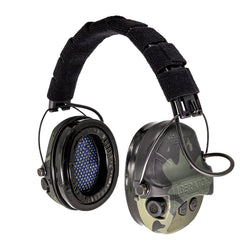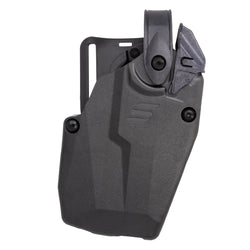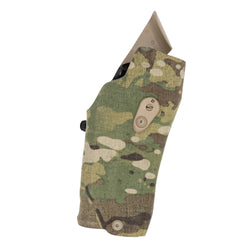With a tactical background, you don’t just chase game when you hunt—you operate with intent. Fall hunting season brings countless opportunities to apply principles learned from the range and training into the field.
Whether you’re bowhunting in the high country or stalking whitetails in thick timber, a tactical mindset improves safety, awareness, and effectiveness.

Tactical shooters scan their sectors. Hunters scan the land. Same mindset, different terrain.
Situational Awareness
In tactical shooting, you’re trained to constantly assess your environment. That same vigilance serves you in the field. Knowing wind direction, animal movement patterns, and potential safety concerns is vital.
Make a habit of scanning your surroundings—not just for game, but for potential hazards or human activity. It’s about proactive thinking, not just reaction.

Movement and Concealment
Tactical movements on the range and hunting stalks share more in common than you think: slow, deliberate steps, using terrain and cover to your advantage, controlling noise and visibility.
If you’ve trained in force-on-force or stealth-based drills, you already know how to move without giving yourself away. Translate those skills to your hunt.
Gear Discipline

In tactical settings, every piece of gear has a purpose—and nothing is carried “just because.” Apply that same mindset to your pack.
Weight, noise, access, and reliability all matter. Keep your rifle zeroed, sling secured, and optics protected. Gloves, lights, backup batteries, and communication devices should be field-tested, not just thrown in last minute.
Shooting Under Stress

While hunting often provides a more serene setting than a range scenario, the moment of truth—a broadside shot on a bull elk or a pressured follow-up shot—requires the same composure. Dry-fire reps, breathing control, and target transitions all play a role in making that first shot count.
Emergency Planning
Tactical training emphasizes team safety, comms, and emergency protocols. Apply that same structure to your solo or group hunts. Leave a plan with someone, carry comms (like an inReach or ham radio), and always know your exit routes. If something goes wrong in the backcountry, your tactical prep could save your life—or someone else’s.
Fall is about more than filling a tag. It’s about stepping into the wild with the confidence that comes from preparation. From the range to the ridge, hunt smart, move with purpose, and stay sharp.









